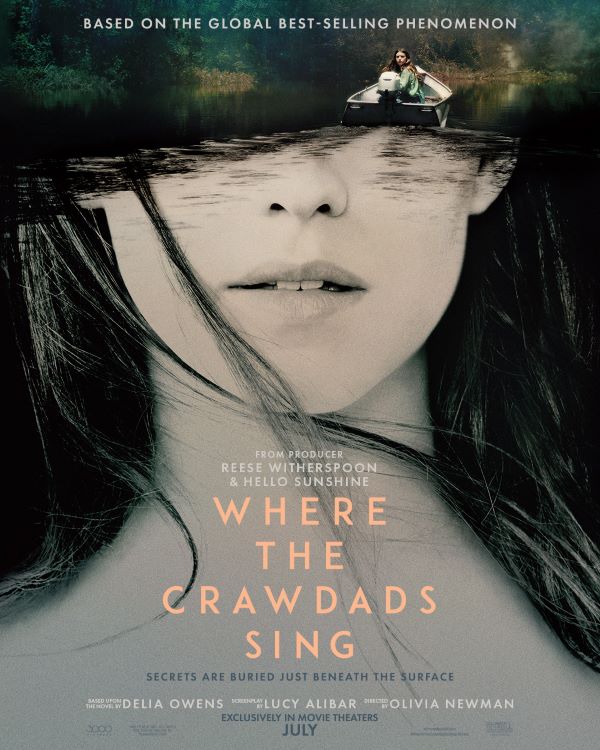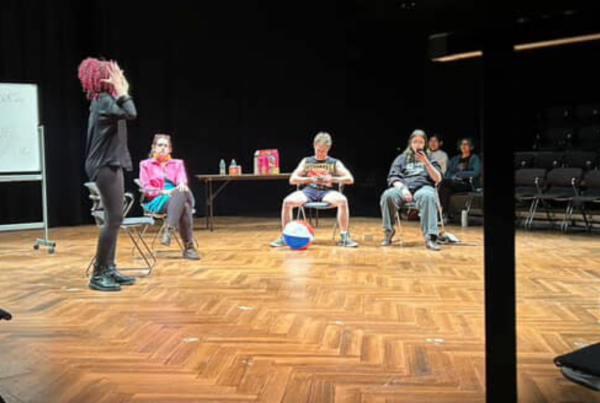One of the most jaw-dropping, trauma-filled, murder mysteries, “Where the Crawdads Sing” was dropped on August 14, 2018 by Delia Owens and then later endorsed by Reese Witherspoon’s Book Club.
Now, as of July 15, 2022 the whole world got to see our “Marsh Girl,” Kya, on the big screen.

Unfortunately, there was a delay. The original June 24, 2022 release date was mentioned in the book review in 2021, but was pushed back almost a month or so. Regardless, fans got to see Owens’s novel on screen – finally.
Before you got any further, here are the trigger warnings for the since it is rated PG-13: child abandonment, domestic abuse, sexual assault, profanity, racial slurs and alcoholism.
The storyline
For those who haven’t read the book, here’s a quick synopsis of the plotline.
Essentially, there are two separate timelines throughout the film.
One follows a young Kya Clark, played by Jojo Regina, as she raises herself in the wild marsh of Barkley Cove, N.C. in the year 1952.
The second timeline follows an older Kya, played by Daisy Edgar-Jones in 1969, where the cops of this small town investigate the murder of Chase Andrews, played by Harris Dickinson. Of course, Kya is the prime suspect throughout the film.
One thing to mention before this movie review goes further is the trigger warnings this movie and book contain: there is a lot of trauma and potential triggers that are discussed throughout Kya’s life, including profanity, child neglect, abandonment, abuse, attempted rape, violence, possible murder, sexual situations and racial slurs. Some of it is portrayed explicitly on screen with this movie, so make sure to read all warnings before you watch this movie.
Now, into the review; Minor spoilers ahead
The opening scene of “Where the Crawdads Sing,” gives an entire view of the marsh and a brief description of what it actually means to Kya, something fans have only been able to imagine for years since the release of the novel.
The creators of this movie portrayed it wonderfully. Not only do we get a direct feel of Kya’s connection to her home, but we also get a clear image of something we’ve only briefly pictured in our novel-bound brains during the reading of its description.
One thing fans might have wanted to see at the beginning was the physical form of Kya — we don’t see her until into the first seven minutes of the movie. However, it is a movie, so introducing the murder and cop behind-the-scenes parts of it sets up the hook and the background of the story a little better before launching directly into the introduction of Kya.
When Kya is introduced, everyone immediately gets to see her try and outrun the police — we love an action-filled police chase to scoop us in.
Then, the audience is introduced to some scenes with a young Kya and meets our dear young Tate Walker, played by Luke David Blumm. The older Tate who comes around later is played by Taylor John Smith.
As the movie weaved through each plotline, the most notable scenes were the interactions between Tate and Kya. The actors had amazing chemistry in all of their scenes and wonderfully portrayed personalities on screen. Edgar-Jones and Smith basically carried the movie with their expressive on-screen personalities and their ability to portray extensive messages with just a simple look or moment.
However, one might argue Dickinson played his role just as well, since he did make all the viewers hate him after a few disgusting attitudes he threw at Kya. He did play a good villain that made everyone hate him in the end.
The best character of all though was definitely Tom Milton, the lawyer who represented Kya in the murder trial, played by David Strathairn. Something about his constant comic relief and good soul to help the poor “Marsh Girl” who never got a chance made his character so pure and engaging to watch.
Too bad he was wrong in all his assumptions. While we watch the contradicting timelines, we get almost all of the same scenes from the book — and all of them are the ones fans would’ve been looking for in the movie.
The creators did a fantastic job of keeping in all the essential scenes that made Kya who she was and led her to the plot twist she committed. There were probably extra scenes that one could find in the novel that they want to see portrayed on the big screen.
Nonetheless, the combination of the choice of scenes and the portrayal of the timeline the book and movie overlapped on was quite satisfying. One might argue better than a lot of the book adaptation films audiences typically see.
The spoiler scenes
The biggest effect a lot of people were looking for was the connective sympathetic relationship to Kya about her upbringing, the effect it had on Barkley Cove’s residents and the audience when deciding whether to name her as guilty.
They started off thinking Kya had done it, she was quiet about the murder and didn’t put up much of a fight. Throughout the movie, we watch how she was used and treated by the men her life, including her father, Pa, played by Garret Dillahunt; her brother Jodie, the younger version played by Will Bundon and the older version played by Logan Macrae; Chase and even Tate for a while there.
Kya is repeatedly abandoned, constantly treated like dirt and almost always thrown to the side as a last resort by those she surrounds herself with. The only people throughout the entire movie who really had been with Kya through the years was Jumpin’, played by Sterling Macer Jr. and his wife Mabel, played by Michael Hyatt.
Hence the audience gets a bit of an understanding as to why Kya is the way she is, and they slowly believe she’s the victim. She couldn’t have possibly murdered Chase Andrews, even after all he did to her.
The audience feels sympathy for Kya and is blinded by the fact that a man is still dead in a murder mystery — the creators recreated this shock and built up tension perfectly for new fans as well as old fans who had already read the book.
Just as you start to feel sorry for Kya and the audience is satisfied with her happy ending, boom.
They hit you with the end scene where Tate finds the missing shell necklace from Chase’s death hidden in one of Kya’s books. And then he throws it in the ocean and Kya rests in piece with the knowledge of her murder put to rest forever.
The portrayal of this ending on screen was actually phenomenal.
There are barely any expressions and no words from Tate during this whole interaction. However, the audience can use the context clues and put together that Kya committed the murder and got away with it. Our poor, innocent lawyer, Tom Milton, was actually helping the wrong person.
A final look
Besides the insane plot twist, the closely scripted adaptation to the book and the phenomenal acting throughout the film, the best part had to be the visuals.
The film was not shot in a studio and was filmed on location in Louisiana, which made the movie all that much more realistic and engaging for audiences. Fans got to hear the real sounds of the marsh and experience every visual of the actors like they were there, it made the small town visuals and the nature scenes much more captivating than it would’ve been without that outside appeal.
Now, the film does get a lot of negative reviews across the platform, but for many fans who did read the book, they were quite satisfied with the adaptation, even if it wasn’t exactly, 100 percent what they wanted — no movie adaptations ever are anyways.
But if you get the chance, definitely read the book first if you haven’t already. Delia Owens has a great description of the scenery and timeline in the book, somehow in even more detail than is portrayed in the movie.
“Where the Crawdads Sing” may just have to be considered the best book-to-big-screen adaptation of the year — but don’t jump the gun yet. We don’t know what else may be lingering around the corner for the book world.
Jaedyn Young can be reached at jaedynyoung@sagebrush.unr.edu or on Twitter @jaedyn_young3.









